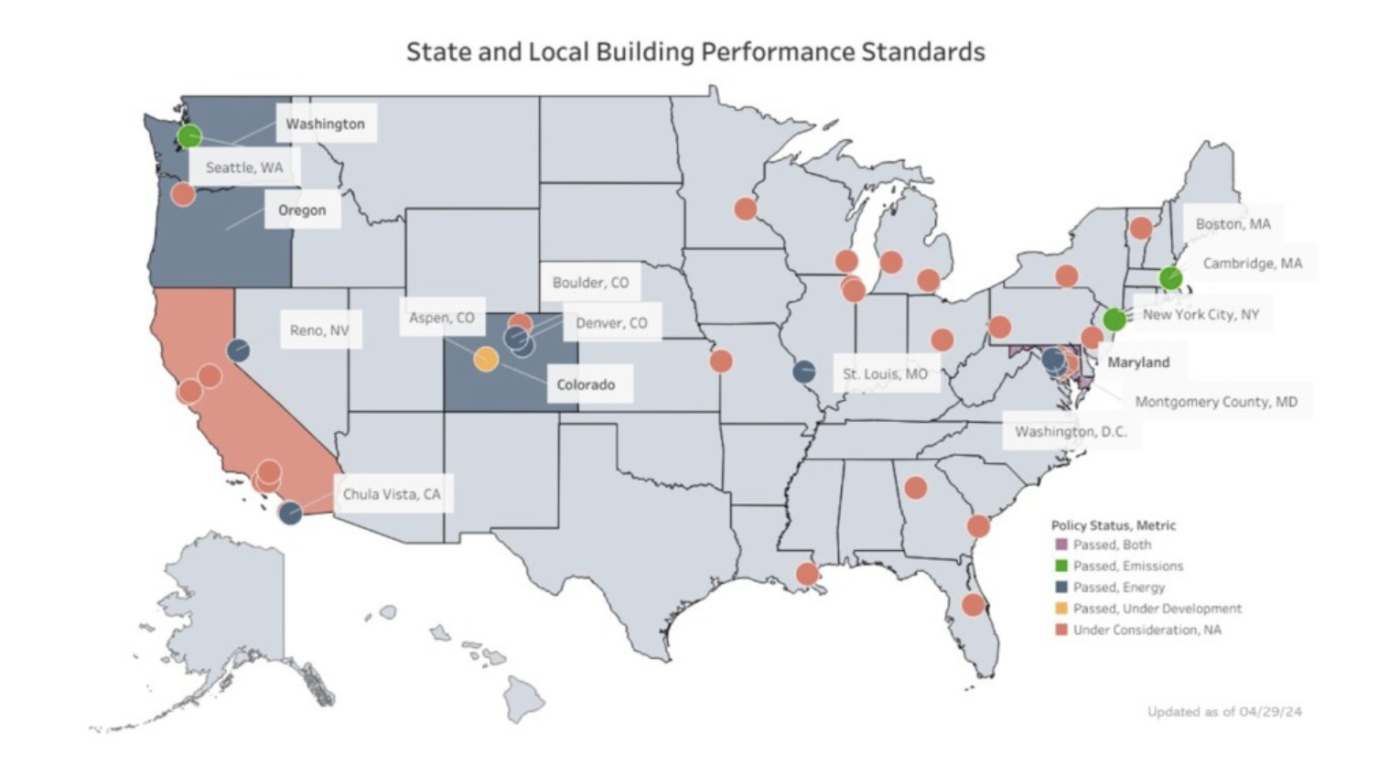
In this episode of the REIT Report special series “Building to Zero,” Duane Desiderio, senior vice president at the Real Estate Roundtable (RER) shares a recently released 20-point policy guide which outlines lessons learned from the building owner perspective over the past seven years since the first building performance standard was implemented in 2017.
Since Local Law 97 was passed by the City Council in New York City as part of the Climate Mobilization Act in April 2019, commercial building owners in the United States have experienced the rise in regulations know as Building Performance Standards (BPS), which are intended to regulate the use of energy in existing buildings. Buildings owners are currently navigating a patchwork of law with various rules, processes, and compliance pathways in cities and states across the county.
“A good way to start the conversation is by drawing a bit of a contrast to the climate and energy policies on buildings that we've seen come from the federal level, where the emphasis has been on carrots not sticks, incentives to encourage buildings to push the envelope to reduce emissions to become more efficient. At the state and local level unlike the federal level, these BPS laws would impose mandatory limits on buildings to either reduce their energy by certain amounts every year or to reduce their carbon emissions every year or in some cases both.”
In September 2024, to support commercial real estate advocates in jurisdictions where BPS policies are being enacted or considered, RER published a 20-point policy guide, Lessons Learned to Shape Fair and Reasonable Building Performance Standards (BPS) , outlining the key issues and considerations that should be addressed when implementing these regulations. This resource will support both local jurisdictions and building sector stakeholders in constructive dialog as interest in BPS policies continue to increase at the local level.

Desiderio shares, “The issues that we're discussing here for state and local regulatory BEPS really do apply across the board with some of the federal voluntary standards, as well as issues we've seen from international groups at the NGO level that are also trying to look for pathways and measures to decarbonize buildings as a prerequisite to attract global capital.”
The policy guide is a tool for building owners to have a seat at the table and to be part of discussions, which is crucial to implementing smart and reasonable policy standards. This includes considerations about what is within a building owners’ control and the portion of emissions attributable to the building verses emissions tied to the electric grid from which the building depends on for power.
“The more that that becomes a collaborative exercise rather than a pushing down or a mandate, the more productive it will be. And I think a lot of the points raised in the document really demonstrate that the building owners do have expertise in this area, including many Nareit and RER members that contributed and are named in the document.”
Listen and subscribe on your podcast platform of choice.
Other podcasts in the Building to Zero series
- USGBC’s Journey to Support Decarbonization of the Built Environment
- Unlocking Clean Energy Supply Through Utility Grid Expansion and Improvement
- DOE Better Buildings Initiative’s Support for Building Sector Decarbonization
- BXP’s Ben Myers on Electrifying the Built Environment
- Real Estate Roundtable says CRE Playing Key Role in Success of Federal Climate Programs
- Empire State Realty Trust Makes the Business Case for Decarbonization Strategy
- Norges Bank Says Real Estate Facing “Tremendous Pressure” to Decarbonize